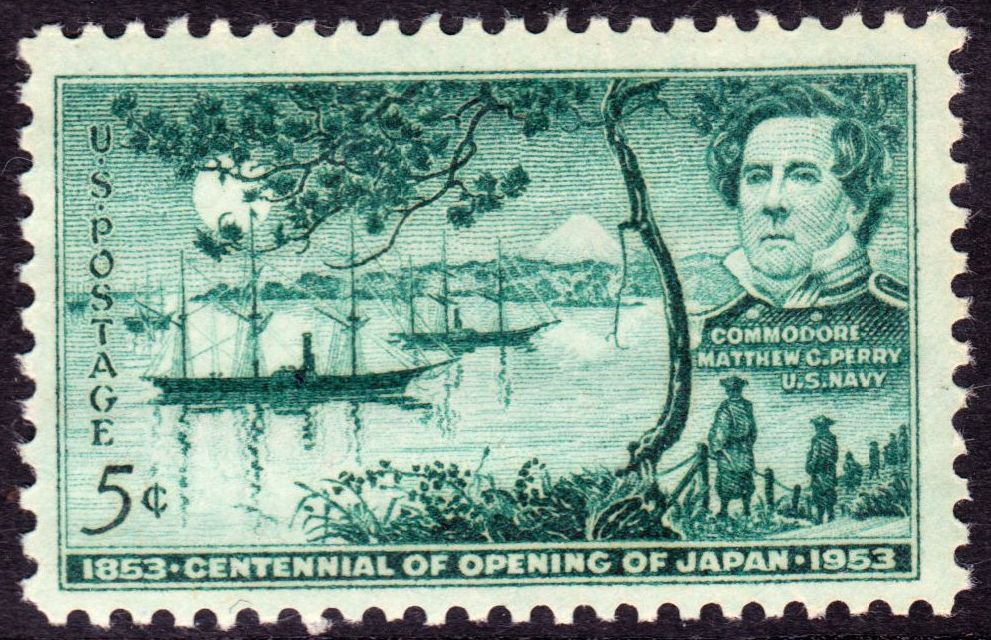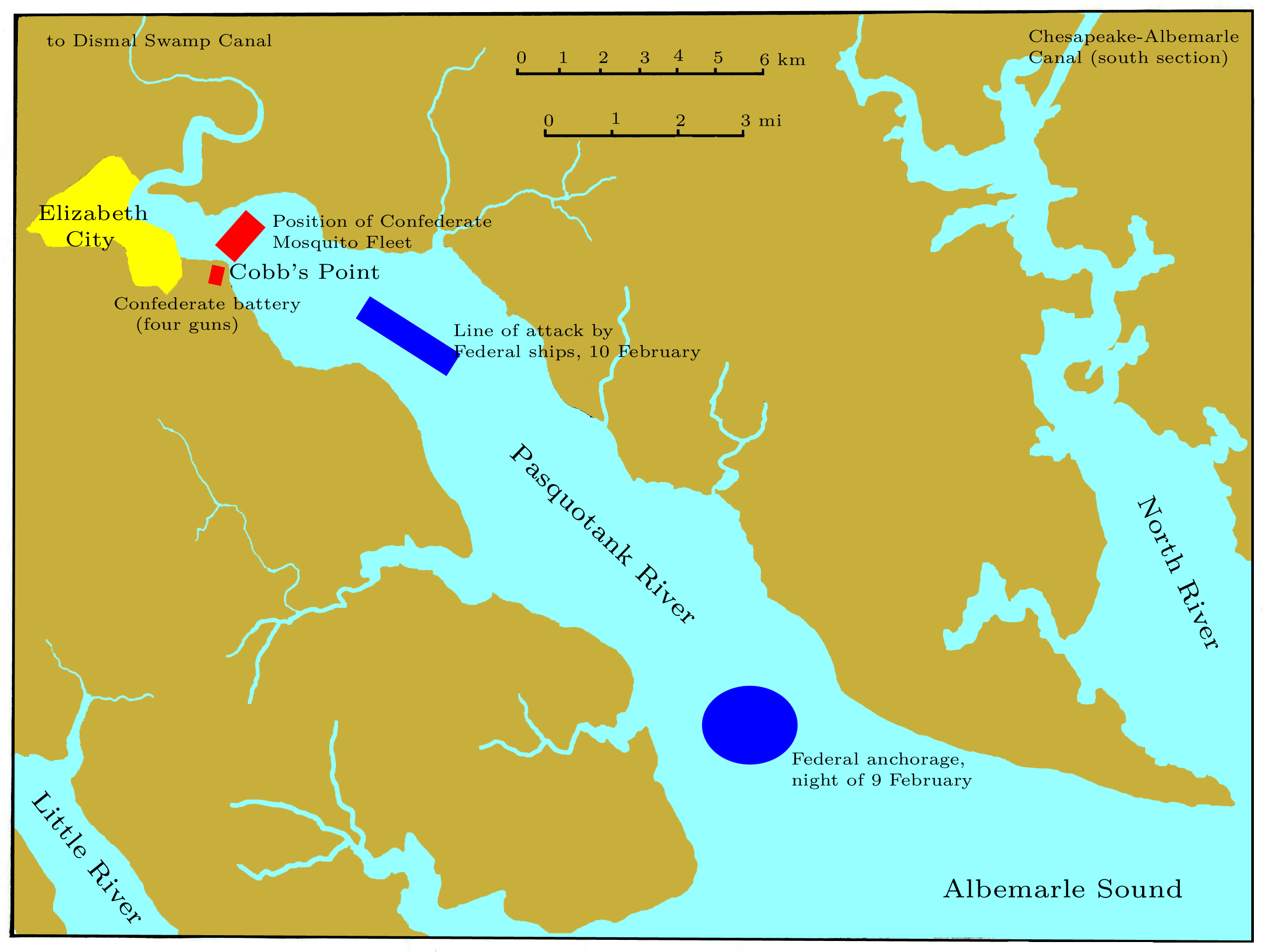|
USS Commodore Perry (1859)
USS ''Commodore Perry'' was a steamer acquired by the Union Navy during the first year of the American Civil War. ''Commodore Perry'' was outfitted as a gunboat with heavy guns and a large crew of 125 officers and enlisted personnel. Her powerful guns were capable of doing considerable damage to blockade runners or shore fortifications of the Confederate States of America. Service history ''Commodore Perry'' — an armed, side-wheel ferry — was built in 1859 by Stack and Joyce, Williamsburg, New York; purchased by the Navy on 2 October 1861; and commissioned later in the month, Acting Master F. J. Thomas in command. The ship was named in honor of Commodore Oliver Hazard Perry, who commanded American forces on Lake Erie in the War of 1812, and his brother Matthew Calbraith Perry, who negotiated the Convention of Kanagawa historic treaty which opened Japan to American commerce, and who had died the previous year, in 1858. Civil War ''Commodore Perry'' sailed from ... [...More Info...] [...Related Items...] OR: [Wikipedia] [Google] [Baidu] |
Commodore (United States)
Commodore was an early title and later a rank in the United States Navy, United States Coast Guard and the Confederate States Navy, and also has been a rank in the United States Public Health Service Commissioned Corps and the National Oceanic and Atmospheric Administration Commissioned Officer Corps (NOAA Corps) and its ancestor organizations. For over two centuries, the designation has been given varying levels of authority and formality. Today, it is no longer a specific rank within active-duty or reserve forces or in the Public Health Service Commissioned Corps or NOAA Corps, but it remains in use as an ''honorary title'' within the U.S. Navy and U.S. Coast Guard for those senior captains (pay grade O-6) in command of operational organizations composed of multiple independent subordinate naval units (e.g., multiple independent ships or aviation squadrons). However, "commodore" is a rank that is actively used to this day in the United States Coast Guard Auxiliary, the civ ... [...More Info...] [...Related Items...] OR: [Wikipedia] [Google] [Baidu] |
Matthew Calbraith Perry
Matthew Calbraith Perry (April 10, 1794 – March 4, 1858) was a commodore of the United States Navy who commanded ships in several wars, including the War of 1812 and the Mexican–American War (1846–1848). He played a leading role in the opening of Japan to the West with the Convention of Kanagawa in 1854. Perry was interested in the education of naval officers and assisted in the development of an apprentice system that helped establish the curriculum at the United States Naval Academy. With the advent of the steam engine, he became a leading advocate of modernizing the U.S. Navy and came to be considered "The Father of the Steam Navy" in the United States. Lineage Matthew Perry was a member of the Perry family, a son of Sarah Wallace ( née Alexander) (1768–1830) and Navy Captain Christopher Raymond Perry (1761–1818). He was born April 10, 1794, South Kingstown, Rhode Island. His siblings included Oliver Hazard Perry, Raymond Henry Jones Perry, Sarah Wallace Perry, A ... [...More Info...] [...Related Items...] OR: [Wikipedia] [Google] [Baidu] |
Pasquotank River
The Pasquotank River , from the North Carolina Collection's website at the . Retrieved 2012-09-18. is a coastal water-body in Northeastern in the . Located between Camden and [...More Info...] [...Related Items...] OR: [Wikipedia] [Google] [Baidu] |
Sloop
A sloop is a sailboat with a single mast typically having only one headsail in front of the mast and one mainsail aft of (behind) the mast. Such an arrangement is called a fore-and-aft rig, and can be rigged as a Bermuda rig with triangular sails fore and aft, or as a gaff-rig with triangular foresail(s) and a gaff rigged mainsail. Sailboats can be classified according to type of rig, and so a sailboat may be a sloop, catboat, cutter, ketch, yawl, or schooner. A sloop usually has only one headsail, although an exception is the Friendship sloop, which is usually gaff-rigged with a bowsprit and multiple headsails. If the vessel has two or more headsails, the term cutter may be used, especially if the mast is stepped further towards the back of the boat. When going before the wind, a sloop may carry a square-rigged topsail which will be hung from a topsail yard and be supported from below by a crossjack. This sail often has a large hollow foot, and this foot is sometimes fil ... [...More Info...] [...Related Items...] OR: [Wikipedia] [Google] [Baidu] |
North Carolina
North Carolina () is a state in the Southeastern region of the United States. The state is the 28th largest and 9th-most populous of the United States. It is bordered by Virginia to the north, the Atlantic Ocean to the east, Georgia and South Carolina to the south, and Tennessee to the west. In the 2020 census, the state had a population of 10,439,388. Raleigh is the state's capital and Charlotte is its largest city. The Charlotte metropolitan area, with a population of 2,595,027 in 2020, is the most-populous metropolitan area in North Carolina, the 21st-most populous in the United States, and the largest banking center in the nation after New York City. The Raleigh-Durham-Cary combined statistical area is the second-largest metropolitan area in the state and 32nd-most populous in the United States, with a population of 2,043,867 in 2020, and is home to the largest research park in the United States, Research Triangle Park. The earliest evidence of human occupation i ... [...More Info...] [...Related Items...] OR: [Wikipedia] [Google] [Baidu] |
Schooner
A schooner () is a type of sailing vessel defined by its rig: fore-and-aft rigged on all of two or more masts and, in the case of a two-masted schooner, the foremast generally being shorter than the mainmast. A common variant, the topsail schooner also has a square topsail on the foremast, to which may be added a topgallant. Differing definitions leave uncertain whether the addition of a fore course would make such a vessel a brigantine. Many schooners are gaff-rigged, but other examples include Bermuda rig and the staysail schooner. The origins of schooner rigged vessels is obscure, but there is good evidence of them from the early 17th century in paintings by Dutch marine artists. The name "schooner" first appeared in eastern North America in the early 1700s. The name may be related to a Scots word meaning to skip over water, or to skip stones. The schooner rig was used in vessels with a wide range of purposes. On a fast hull, good ability to windward was useful for priv ... [...More Info...] [...Related Items...] OR: [Wikipedia] [Google] [Baidu] |
Elizabeth City, North Carolina
Elizabeth City is a city in Pasquotank County, North Carolina, Pasquotank County, North Carolina, United States. As of the 2020 census, it had a population of 18,629. Elizabeth City is the county seat and largest city of Pasquotank County. It is the cultural, economic and educational hub of the sixteen-county Historic Albemarle region of northeastern North Carolina. Elizabeth City is the center of the Elizabeth City micropolitan area, Elizabeth City Micropolitan Statistical Area, with a population of 64,094 as of 2010. It is part of the larger Hampton Roads, Virginia Beach-Norfolk, VA-NC Combined Statistical Area. The city is the economic center of the region, as well as home to many historic sites and cultural traditions. Marketed as the "Harbor of Hospitality", Elizabeth City has had a long history of shipping due to its location at a narrowed bend of the Pasquotank River. Founded in 1794, Elizabeth City prospered early on from the Dismal Swamp Canal as a mercantile city. La ... [...More Info...] [...Related Items...] OR: [Wikipedia] [Google] [Baidu] |
9th New York Volunteer Infantry Regiment
The 9th New York Infantry Regiment was an infantry regiment that served in the Union Army during the American Civil War. It was also known as the "''Hawkins' Zouaves''" or the "''New York Zouaves''." Military service, 1861 In April 1861 with the secession of the Southern States and the calling up of volunteers by President Abraham Lincoln, Rush C. Hawkins went to Albany, New York, and volunteered the services of a company of New York Zouaves to the state. The governor of New York accepted the offer of the company, and also granted the authorization to Hawkins to raise a regiment of Zouaves. With this authorization in hand he returned to New York City and opened a recruiting office which soon had drawn over 2,000 volunteers, this large number of recruits quickly outgrew the size of the recruiting office. In early April the regiment moved to its new quarters at Castle Garden in New York City, where on April 23 and 27 the ten companies of the regiment were mustered into state servi ... [...More Info...] [...Related Items...] OR: [Wikipedia] [Google] [Baidu] |
Roanoke Island
Roanoke Island () is an island in Dare County, North Carolina, Dare County, bordered by the Outer Banks of North Carolina, United States. It was named after the historical Roanoke (tribe), Roanoke, a Carolina Algonquian people who inhabited the area in the 16th century at the time of British colonization of the Americas, English colonization. About long and wide, the island lies between the mainland and the Outer Banks, barrier islands near Nags Head, North Carolina, Nags Head. Albemarle Sound lies on its north, Roanoke Sound on the eastern, Croatan Sound on the west, and Wanchese, North Carolina, Wanchese census-designated place, CDP lies at the southern end. The town of Manteo, North Carolina, Manteo is located on the northern portion of the island, and is the county seat of Dare County. Fort Raleigh National Historic Site is on the north end of the island. The island has a land area of and a population of 6,724 as of the United States Census, 2000, 2000 census. Today U.S. Hi ... [...More Info...] [...Related Items...] OR: [Wikipedia] [Google] [Baidu] |
Union Army
During the American Civil War, the Union Army, also known as the Federal Army and the Northern Army, referring to the United States Army, was the land force that fought to preserve the Union (American Civil War), Union of the collective U.S. state, states. It proved essential to the preservation of the United States as a working, viable republic. The Union Army was made up of the permanent Regular Army (United States), regular army of the United States, but further fortified, augmented, and strengthened by the many temporary units of dedicated United States Volunteers, volunteers, as well as including those who were drafted in to service as Conscription in the United States, conscripts. To this end, the Union Army fought and ultimately triumphed over the efforts of the Confederate States Army in the American Civil War. Over the course of the war, 2,128,948 men enlisted in the Union Army, including 178,895 United States Colored Troops, colored troops; 25% of the white men who s ... [...More Info...] [...Related Items...] OR: [Wikipedia] [Google] [Baidu] |
North Atlantic Blockading Squadron
The Union blockade in the American Civil War was a naval strategy by the United States to prevent the Confederacy from trading. The blockade was proclaimed by President Abraham Lincoln in April 1861, and required the monitoring of of Atlantic and Gulf coastline, including 12 major ports, notably New Orleans and Mobile. Those blockade runners fast enough to evade the Union Navy could carry only a small fraction of the supplies needed. They were operated largely by foreign citizens, making use of neutral ports such as Havana, Nassau and Bermuda. The Union commissioned around 500 ships, which destroyed or captured about 1,500 blockade runners over the course of the war. Proclamation of blockade and legal implications On April 19, 1861, President Lincoln issued a ''Proclamation of Blockade Against Southern Ports'': Whereas an insurrection against the Government of the United States has broken out in the States of South Carolina, Georgia, Alabama, Florida, Mississippi, Louisiana, ... [...More Info...] [...Related Items...] OR: [Wikipedia] [Google] [Baidu] |





.jpg)


